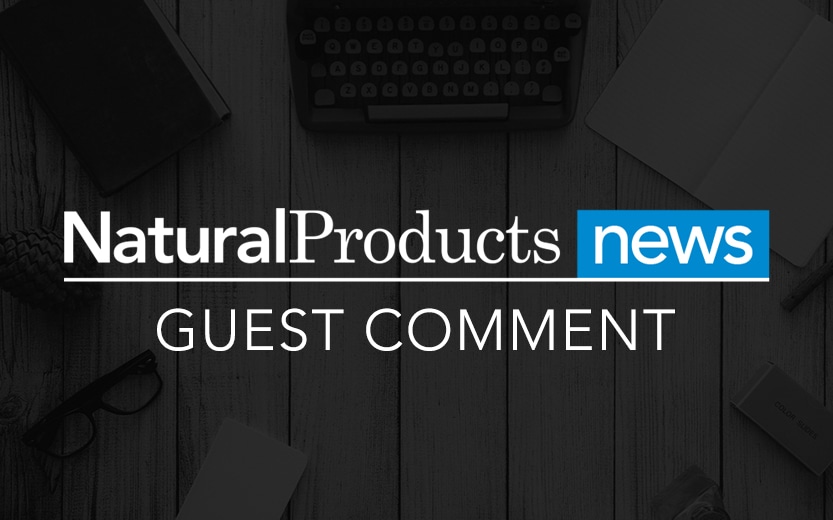Dr Heather Daniell, founder of Satisfied Snacks, asks if advances in sustainable packaging can offer plastic-free alternatives which still reduce food waste.
The plastic problem is now at the forefront of the minds of consumers and retailers. However, we arrived at this point because food packaging reduces food waste, extending shelf life and protecting it during transit. Reduction in food waste reduces carbon emissions and the resources needed to produce the food in the first place. The UN estimates that one third of food is wasted between production and consumption. According to the Economist, the environmental effects are particularly acute when it comes to packing meat where vacuum packs can double shelf life. They further point out that the carbon footprint of packaging waste is less than that of food waste, with emissions from food waste accounting for more emissions than those produced by India.
However, on the other hand plastic packing is now littering our oceans and land. Only 9% of all plastic made has been recycled, with 79% ending up landfills and the surrounding environment – an estimated 12 billion tonnes in landfill and nearly one billion tonnes in the oceans by 2050, according to an article in Science Advances. This is problematic because a recent study published in the US Geological Survey has now found microplastics in Rocky Mountain rainwater. And the problem isn’t just the effect on wildlife; plastics are starting to be linked to a number of human health concerns.
The carbon footprint of packaging waste is less than that of food waste, with emissions from food waste accounting for more emissions than those produced by India
The challenge is how do we replace highly functional plastic packaging with more sustainable alternatives? One example of a sustainable solution is PLA or polylactic acid derived from starch. It is one of the most widespread compostable alternatives. However, unfortunately it requires industrial composting conditions, which are not widely available to consumers. Additionally, if it is mixed in with plastic recycling it can affect the quality of the resulting material.
Better solutions must be found
Corporate R&D and venture capital funds are focused on finding solutions. However, funding into the sector remains minimal in comparison to sectors like renewable energy where even in the early days investment was in the tens of billions. Sky Ocean Ventures reports venture investment into sustainable plastic solutions including waste management, circular economy and natural alternatives to have been about $400 million in 2018. Sky Ocean Ventures themselves have funded several interesting companies using materials from seaweed and fisheries waste. Seaweed-based materials can be used to create edible or dissolvable packaging. Ooho and NotPLA have developed edible water capsules that were distributed at this year’s London Marathon. They are also testing single-use condiment sachets with Just Eat and laminated applications. Cuantec produces chitosan packaging derived from fisheries waste. Its packaging is antimicrobial and can be used to extend the shelf life of a variety of fresh foods.
Nestlé recently launched its Yes! bar in paper packaging. Encouragingly, reports indicate that the material can be used on high speed packaging lines.
However, such solutions cannot replace materials like laminated foil in applications where ultra-high barrier functionality is required. Here, the barrier properties of the foil are combined with the flexibility and durability of plastics. It will be a substantial challenge to replace this material for applications were zero water vapour and oxygen transfer rates are required.
Funding into the sector remains minimal in comparison to sectors like renewable energy where even in the early days investment was in the tens of billions
At Satisfied Snacks we wanted a plastic-free solution for our packaging as our snacks are affected by water vapour and oxygen; we needed a full barrier material. We tested a variety of compostable solutions that are suitable for some products but ultimately were not for ours. In the end we opted for steel cans which are fully and infinitely recyclable. Metals are also a high value material so a much higher proportion of metals are recycled. Additionally, because they are a base element they can be melted down and reformed an infinite number of times. Unfortunately, even plastics that can be recycled will start to break down as the polymer chains degrade over time.
For now this is the best available option for our products. Perhaps in the future sustainable materials being produced by the likes of Cuantec or Ooho may be able to form part of a complete barrier compostable material.
It may take some time to be able to reach the performance of current laminated foil packaging but with the issue at the forefront of consumers’ minds, innovation is sure to happen.











